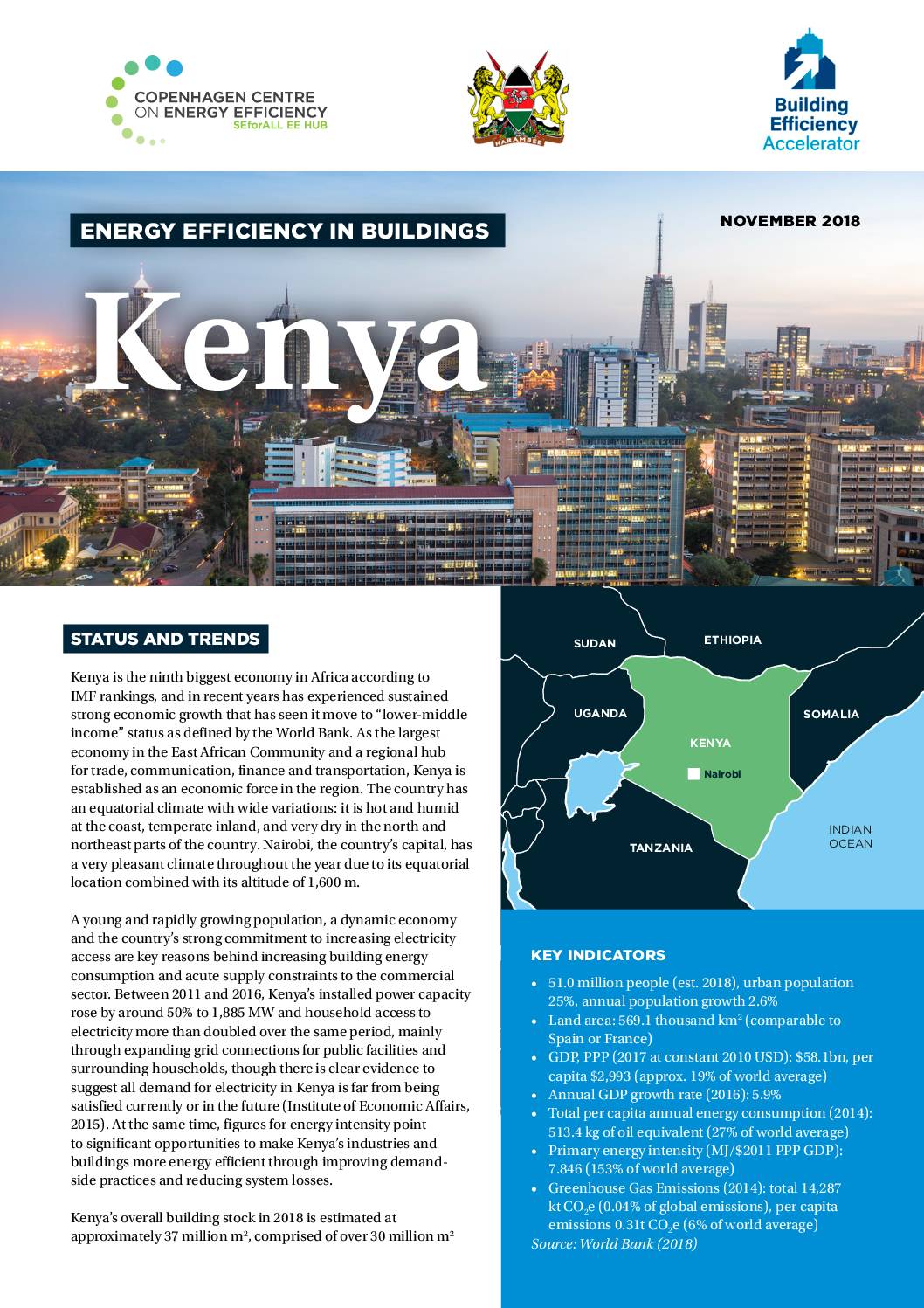Kenya is the ninth biggest economy in Africa according to IMF rankings, and in recent years has experienced sustained strong economic growth that has seen it move to “lower-middle income” status as defined by the World Bank. As the largest economy in the East African Community and a regional hub for trade, communication, finance and transportation, Kenya is established as an economic force in the region. The country has an equatorial climate with wide variations: it is hot and humid at the coast, temperate inland, and very dry in the north and northeast parts of the country. Nairobi, the country’s capital, has a very pleasant climate throughout the year due to its equatorial location combined with its altitude of 1,600 m.
A young and rapidly growing population, a dynamic economy and the country’s strong commitment to increasing electricity access are key reasons behind increasing building energy consumption and acute supply constraints to the commercial sector. Between 2011 and 2016, Kenya’s installed power capacity rose by around 50% to 1,885 MW and household access to electricity more than doubled over the same period, mainly through expanding grid connections for public facilities and surrounding households, though there is clear evidence to suggest all demand for electricity in Kenya is far from being satisfied currently or in the future (Institute of Economic Affairs, 2015). At the same time, figures for energy intensity point to significant opportunities to make Kenya’s industries and buildings more energy efficient through improving demandside practices and reducing system losses.
Download sourceShare this

Sectors: Buildings, Industry, Power sector
Country / Region: Africa, Kenya
Tags: building types, climate relevant communication, coasts, drying, economic capital, economic growth, electricity, electricity generation, equatorial climate, global climate, grid connection, grids, specific financing mechanisms, tradeIn 2 user collections: Energy Efficiency in Buildings: Assessments for Countries and Cities , C2E2 Publications
Knowledge Object: Publication / Report
Published by: Copenhagen Centre on Energy Efficiency
Publishing year: 2018
Author: Copenhagen Centre on Energy Efficiency
